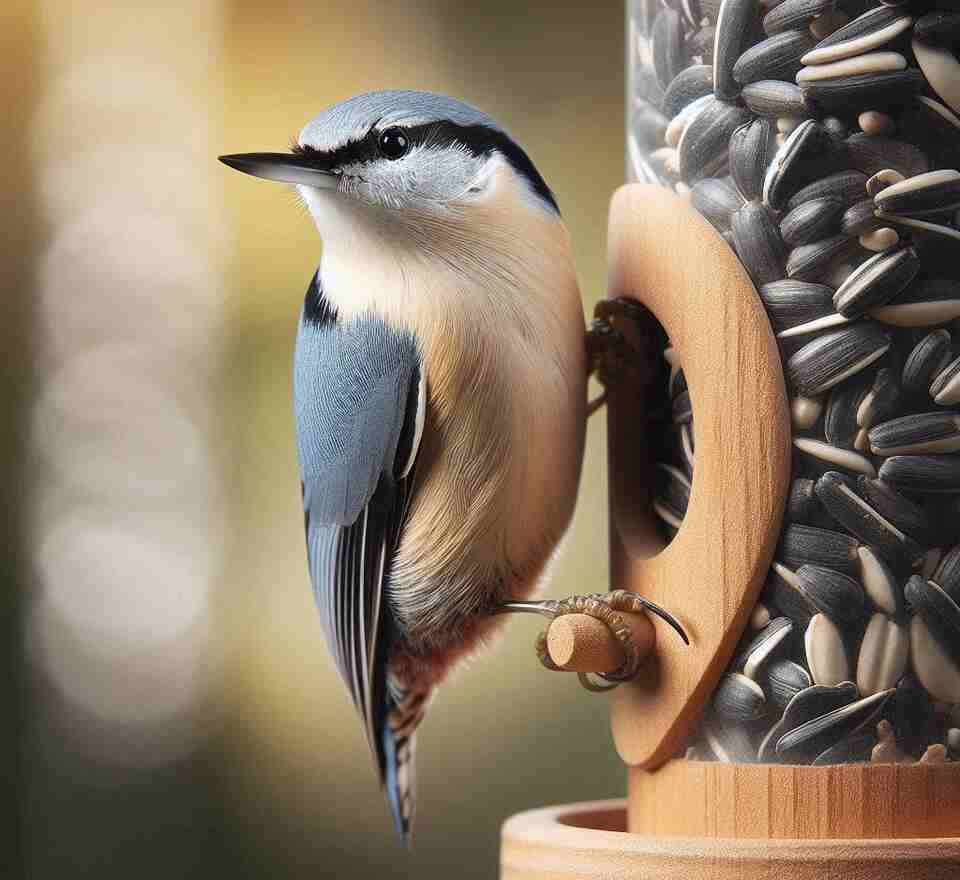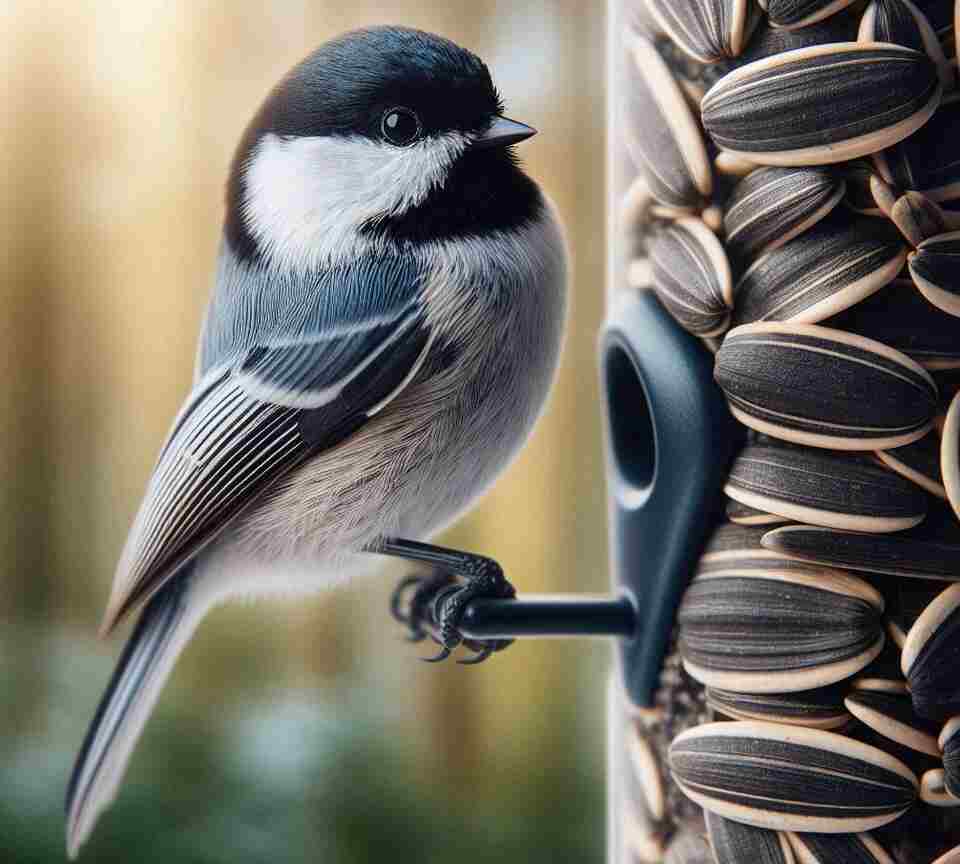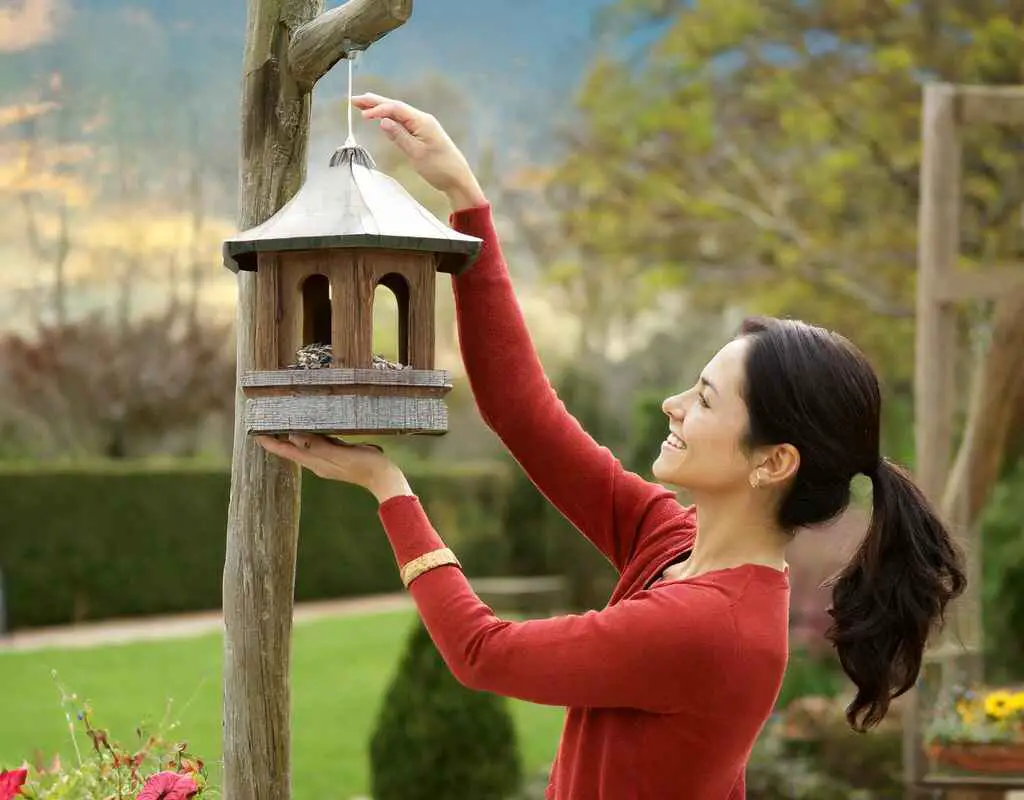Hey there, fellow bird enthusiasts! Whether you’re a seasoned backyard birder or just starting out, we’ve all been there – excitedly hanging up a new bird feeder, only to find it ignored by our feathered friends or, worse, attracting unwanted visitors.
As someone who’s made pretty much every bird feeder placement mistake in the book, I’m here to share some hard-earned wisdom. So, grab a cup of coffee (or tea, if that’s your thing), and let’s dive into the dos and don’ts of bird feeder placement. Trust me, your backyard birds will thank you!
Table of Contents
- 1 Understanding the Importance of Proper Feeder Placement
- 2 The Big No-Nos of Bird Feeder Placement
- 2.1 1. Don’t Ignore Predator Protection
- 2.2 2. Don’t Place Feeders Too Close to Windows
- 2.3 3. Don’t Forget About Cleanliness and Maintenance
- 2.4 4. Don’t Ignore the Needs of Different Bird Species
- 2.5 5. Don’t Overlook the Importance of Natural Food Sources
- 2.6 6. Don’t Create Overcrowding
- 2.7 7. Don’t Ignore Local Regulations and Neighbors
- 3 Quick Reference Table: Bird Feeder Placement Dos and Don’ts
- 4 Conclusion: Creating Your Perfect Bird Feeding Station
- 5 Author
Understanding the Importance of Proper Feeder Placement
Before we get into the nitty-gritty of what not to do, let’s take a moment to appreciate why proper feeder placement is so crucial. You see, it’s not just about attracting birds; it’s about creating a safe, accessible, and inviting environment for them. Good placement can mean the difference between a bustling bird buffet and a lonely, unused feeder.
When I first started feeding birds, I thought it was as simple as hanging a feeder anywhere in the yard. Oh, how wrong I was! I quickly learned that birds have preferences and needs, just like we do. They want to feel safe while they eat, have easy access to the food, and enjoy a comfortable dining experience. Who knew birds could be such picky restaurant critics?
Now, let’s explore some common mistakes to avoid when placing your bird feeders. By steering clear of these blunders, you’ll be well on your way to creating a bird-friendly oasis in your backyard.

The Big No-Nos of Bird Feeder Placement
1. Don’t Ignore Predator Protection
One of the biggest mistakes I made when I first started feeding birds was not considering predator protection. I naively placed my feeders in open areas, thinking it would give birds a clear flight path. Instead, it turned my yard into an all-you-can-eat buffet for the neighborhood cats!
Avoid These Predator-Prone Placements:
- Too close to the ground: Low-hanging feeders are easy targets for cats and other ground predators.
- Near dense shrubs or bushes: While some cover is good, too much can hide predators like cats or hawks.
- In the middle of open spaces: This leaves birds exposed and vulnerable while feeding.
Remember, birds need to feel safe while they’re eating. Try to place your feeders about 10-12 feet away from natural cover like trees or shrubs. This gives birds a quick escape route if they need it, but doesn’t provide hiding spots for predators.
2. Don’t Place Feeders Too Close to Windows
Ah, the classic “I want to see the birds up close” mistake. I get it, I really do. When I first started, I placed a feeder right outside my living room window. It seemed perfect – I could watch the birds while sipping my morning coffee. But then came the heartbreaking sound of birds colliding with the glass.
Window Collision Dangers:
- Birds can’t always distinguish reflections from reality
- High-speed collisions can be fatal or cause serious injuries
- Even if a bird survives the initial impact, it may be too disoriented to escape predators
To avoid this, place your feeders either very close to windows (within 3 feet) or far away (more than 30 feet). The close placement prevents birds from building up too much speed if they do fly towards the window, while the far placement helps them distinguish the window as an obstacle.
3. Don’t Forget About Cleanliness and Maintenance
I’ll admit it – I used to be guilty of the “set it and forget it” approach to bird feeding. I’d fill up the feeder and then not think about it for weeks. Big mistake! Not only did this lead to moldy, spoiled seed, but it also created unsanitary conditions that could spread diseases among my feathered visitors.
Cleanliness Considerations:
- Avoid placing feeders in hard-to-reach areas: If it’s a pain to get to, you’re less likely to clean it regularly.
- Don’t put feeders directly under trees: This can lead to droppings and debris contaminating the food.
- Never place feeders in damp, shaded areas: These conditions promote mold and bacteria growth.
Try to position your feeders in areas that are easy for you to access for regular cleaning and refilling. A good rule of thumb is to clean your feeders at least once every two weeks, more often in wet weather.
4. Don’t Ignore the Needs of Different Bird Species
When I started out, I thought one feeder type in one location would attract all kinds of birds. Oh, how naive I was! Different bird species have different feeding habits and preferences. Ignoring these can mean missing out on a diverse array of backyard visitors.
Species-Specific Considerations:
- Ground feeders: Some birds, like doves and juncos, prefer to feed on the ground.
- Tree climbers: Woodpeckers and nuthatches like feeders attached to tree trunks.
- Open area feeders: Many songbirds prefer feeders in more open spaces.
Try to provide a variety of feeder types in different locations to attract a wider range of species. Just remember to follow the safety guidelines we’ve already discussed for each placement.
5. Don’t Overlook the Importance of Natural Food Sources
In my enthusiasm to attract birds, I once made the mistake of placing feeders far from natural food sources. I thought, “Hey, I’m providing food, so they’ll come no matter what, right?” Wrong! Birds prefer areas that offer a mix of natural and supplemental food.
Natural Food Source Considerations:
- Native plants: These provide seeds, berries, and attract insects that birds eat.
- Water sources: Birds need water for drinking and bathing.
- Diverse habitats: Different birds prefer different types of vegetation.
Try to place your feeders near natural food sources and diverse habitats. This not only attracts more birds but also provides them with a more balanced diet.
6. Don’t Create Overcrowding
In my early days of bird feeding, I thought more feeders meant more birds. So, I crammed several feeders into a small area. The result? Overcrowding, aggressive behavior, and a higher risk of disease transmission.
Overcrowding Issues:
- Increased competition: Can lead to aggressive behavior among birds.
- Higher risk of disease spread: Close contact can facilitate the transmission of bird diseases.
- Attracts nuisance animals: Large amounts of seed in one area can attract rodents or other unwanted visitors.
Space your feeders out around your yard. A good rule of thumb is to have no more than one feeder per 10 feet of space.
7. Don’t Ignore Local Regulations and Neighbors
Believe it or not, there can be rules about feeding birds! I once unknowingly violated a local ordinance about feeding wildlife and had to deal with an unhappy neighbor who wasn’t thrilled about the increase in bird activity (and droppings) in the area.
Regulatory and Neighborly Considerations:
- Local laws: Some areas have restrictions on feeding wildlife, including birds.
- Homeowners’ associations: May have rules about outdoor structures like bird feeders.
- Neighbor considerations: Be mindful of how your bird feeding might affect your neighbors.
Always check local regulations before setting up bird feeders, and consider having a friendly chat with your neighbors about your bird feeding plans.

Quick Reference Table: Bird Feeder Placement Dos and Don’ts
| Do | Don’t |
|---|---|
| Place feeders 10-12 feet from natural cover | Place feeders in wide open spaces |
| Position feeders either very close to or far from windows | Put feeders in the “danger zone” 3-30 feet from windows |
| Clean feeders regularly (at least every two weeks) | Neglect feeder maintenance and cleaning |
| Offer a variety of feeder types and locations | Rely on a single feeder type or location |
| Place feeders near natural food sources | Isolate feeders from the natural environment |
| Space feeders at least 10 feet apart | Cluster multiple feeders in a small area |
| Check local regulations and consider neighbors | Ignore local rules or neighbor concerns |
Conclusion: Creating Your Perfect Bird Feeding Station
Whew! We’ve covered a lot of ground here, haven’t we? From predator protection to neighborhood diplomacy, there’s more to consider in bird feeder placement than you might have thought. But don’t let all these “don’ts” discourage you. Remember, every backyard birder has made mistakes along the way – I sure have! The key is to learn from them and keep improving your bird feeding setup.
By avoiding these common pitfalls, you’re well on your way to creating a safe, inviting, and vibrant feeding station for your feathered friends. You’ll be rewarded with a diverse array of beautiful birds visiting your yard, providing endless hours of entertainment and connection with nature.
Remember, bird feeding is as much about the joy of observing and learning as it is about providing food. So don’t be afraid to experiment (safely, of course!) and see what works best in your unique environment. Keep a journal of your observations, note which placements attract which species, and most importantly, have fun!
Here’s to happy birds and happy birding! May your feeders be always full and your binoculars always at the ready. Happy bird feeding, everyone!


